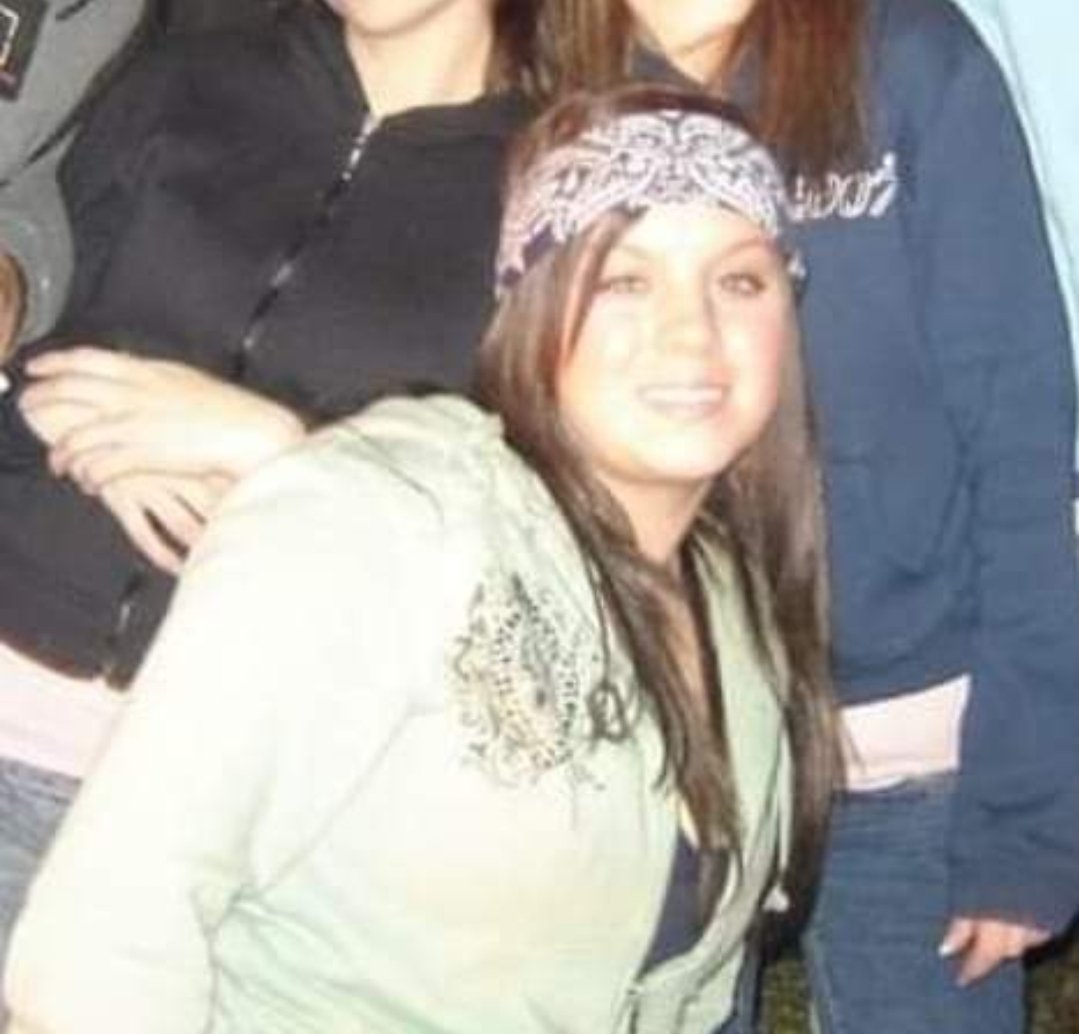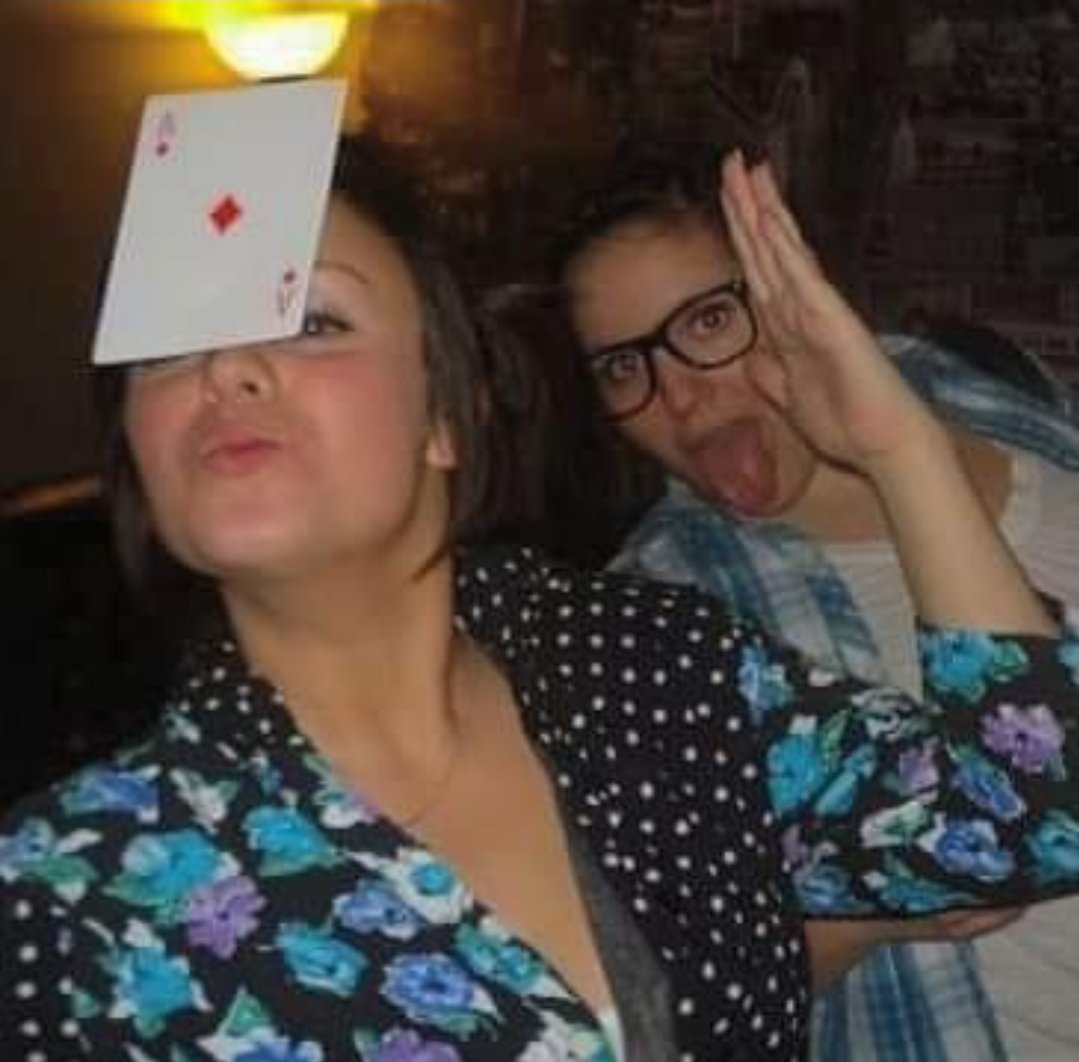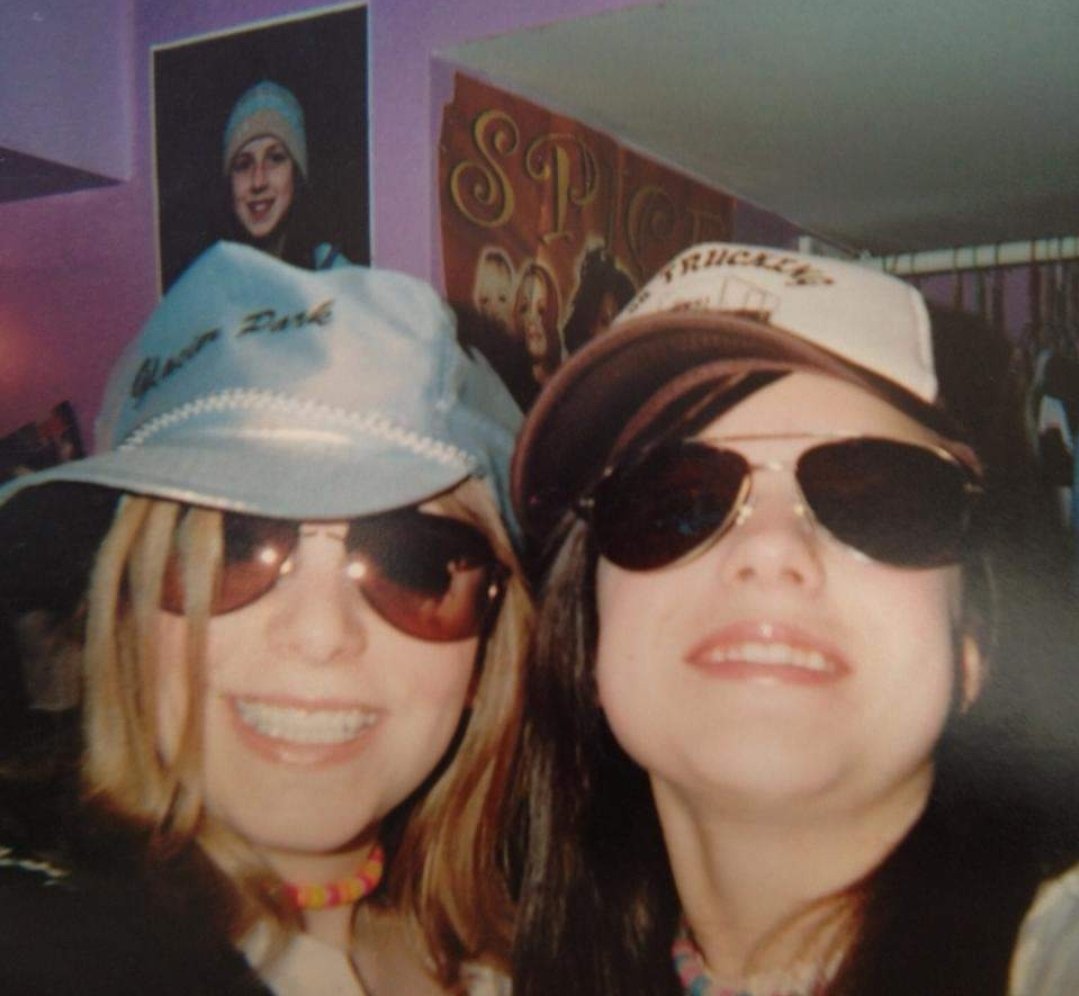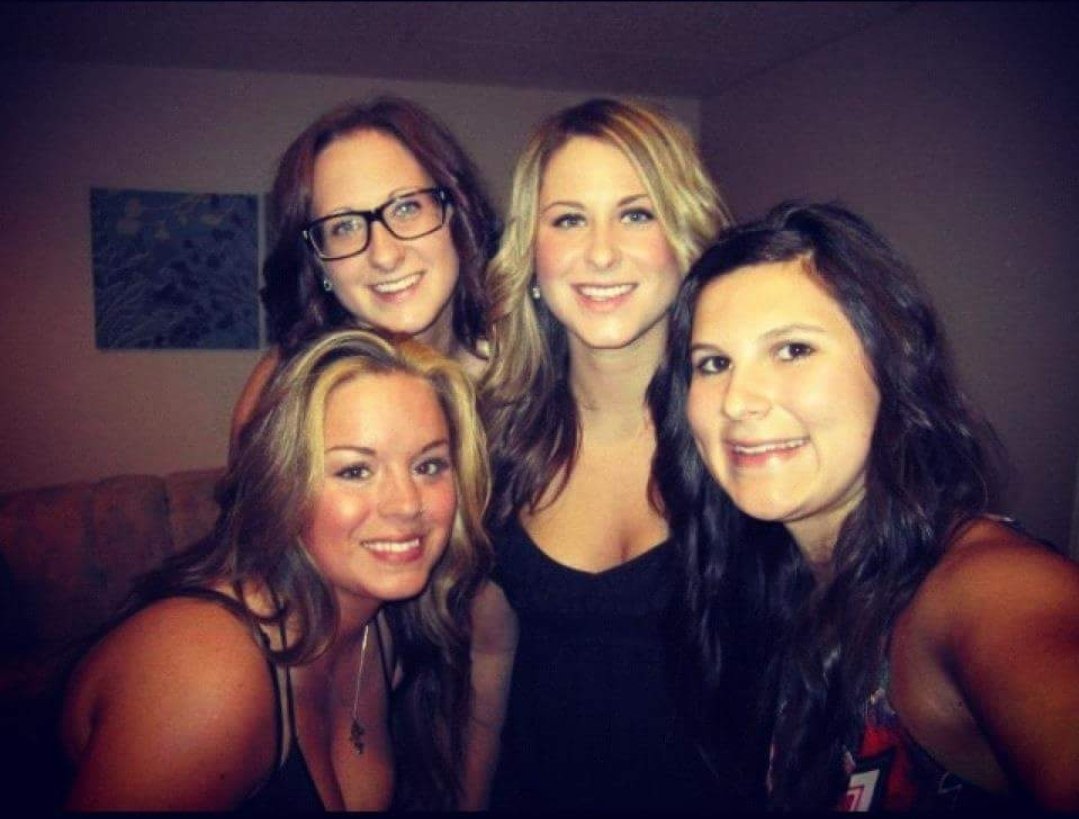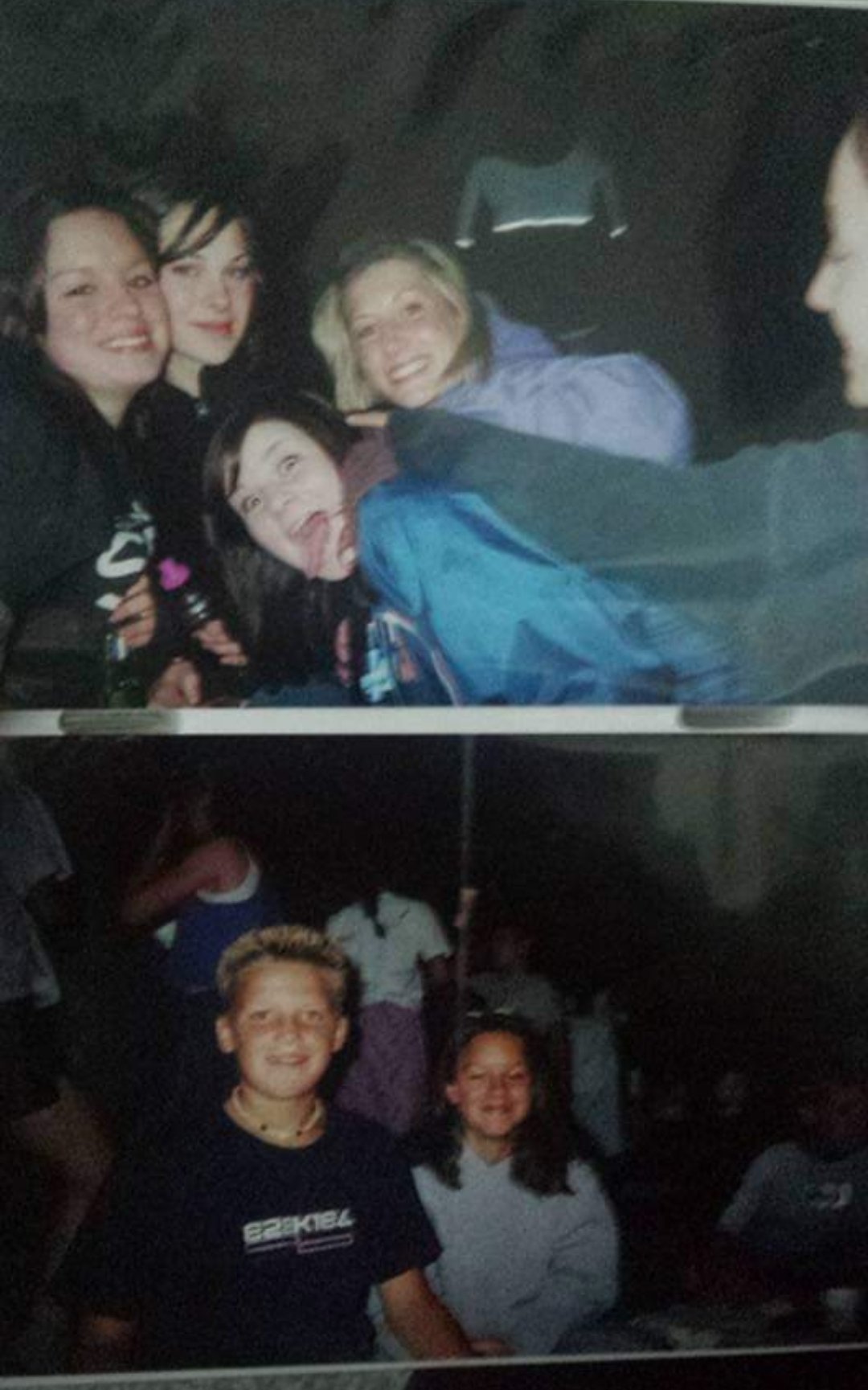Awkward Adolescents: Version 2.0
The first image I ever uploaded to social media (FB - circa 2007 - my first year of university). As we studied this week, whether some are ready to embrace it or not, your digital identity is an extension of your physical reality - transhumanism, as some call it. What you share, post, comment, and like all reacts, positive or negative. Your personal thoughts, emotions, and actions depict what occurs online along with the harsh understanding that anything you put out there is essentially “free game” for anyone else to use as they please, whether they do it legally or not. When the digital world first opened it was a free-for-all and consequences were an after-thought as nobody knew what would result because there had never been anything like it before. Learning from those early stages, we have worked to develop extensions of ourselves that portray our identities as we hope.
My Identity
My first pant suit - 1993My online identity has changed quite a lot in recent years due to building online businesses. In fact, I have multiple versions. Those who search for educational resources may find this blog site or my Sask Thinking Classroom Instagram page while those looking for healthy food ideas might happen upon my Roxy’s Nutrition page. But even with multiple realities, they frequently overlap in content. I previously thought this was bad and that I should be diversifying my content on each platform but after some reflection, I decided that this is who I am. These platforms are parts of a whole that make up my digital identity.
What I’m seeing change in my online identity is the use of my platform(s) for activism. I’m not entirely confident in how that will develop yet but I’m currently on that journey.
My Vulnerability Turned to Activism
I’m aware that posting images and stories of my child can have consequences and I’m still trying to balance that or decide how I feel about it. Like most parents, I love my child more than anything in the world and he is what consumes the majority of my day and my digital presence reflects that. Unlike the majority of parents (but more prevalent than is discussed), it took my husband and myself 5 years and 5 losses to have him.
Choosing to open up about our journey was not something we took lightly but the decision was made when we were lying on the couch holding hands at 3 a.m. waiting for my surgery after confirming our first loss. We had no idea what to expect. We knew nothing and nobody in the medical field could tell us anything. The process for pregnancy loss is atrocious and we can only describe it as such:
“A miscarriage or pregnancy loss is a moment when everyone is there to support you but you have never felt more alone. ”
We never wanted anyone to feel as though they had nobody. I had one friend who had recently had a loss similar to mine and it was my saving grace to be able to reach out to her. My husband and I decided we wanted to be that for others. That is when my activism began and my online identity truly changed and began forming into what it is today.
My Students
Like myself, many of my students have multiple accounts on one platform. They informed me that one is for everyone, one is for friends, another is for friends and family, and the final is for a small group of very close friends. It worries me that multiple realities may cause students to have heightened anxiety and a feeling that they can only be certain versions of themselves for certain people. Wouldn’t we rather them be able to feel accepted for who they are as a whole no matter the audience? As they get older I see them commit to one profile, more often than not, as they learn more about themselves and where they feel they currently fit in the world. I wonder, is this a modern way for them to navigate those awkward pubescent years?
Sidenote: can we pause to note that teens today have FAR LESS awkward appearances than what we had to deal with! Thank goodness for not having a digital trail of THAT… but here’s what I found! I have no comment on the trucker hats, shiny lipgloss, bandanas, and the need to stick our tongues out in photos. **face-palm**
I wonder if having multiple accounts is simply a digital representation of adolescents attempting to figure out who they are rather than actually trying to be different people online. I had a parent tell me that they were concerned that their daughter was trying to be something she’s not in order to impress people and all I could think about was, “But didn’t we all go through that at 13?” Is this just us seeing it rather than having to guess what’s going on?
Why I felt the need to lay on the floor, I’m not sure. My little sister with her first "peace" photo.Identity & Citizenship
If we approach our teachings of digital citizenship (beginning with the entry to grade school) as assisting our youth in portraying a genuine and strong sense of self I don’t believe that we would see a change in preteens having multiple accounts. I think there is a large amount of growth that occurs for humans between the ages of 11-14, 19-22, and 30-35 (not limited to these ages) and rather than going through it invisibly, today’s technology has brought those growth developments to the surface. I think we quite literally see people’s identities change through their digital citizenship. It’s like watching the years of awkward adolescence version 2.0.
Rather than worrying about someone having multiple versions of themselves, we understand them to be growing from one to the next. It’s as if each individual has the opportunity to sample various lifestyles through their citizenship, select where they feel most comfortable, and then pursue that path.
As educators, and as the technological world continues to advance, I find myself focusing on assisting students to do the same thing I’ve always stated, be good people. If we stop trying to add fear of the online world and simply help to make students informed and responsible digital citizens then we may see more success in the choices they make. We can’t safeguard them from everything as they need to learn risk management and be given the opportunities to grow as citizens, including online citizens.
Reiterating those vital points will always be necessary:
what you post is there forever
there are real people on the other side to be mindful & kind
be your authentic self
don’t communicate with people you don’t know
respect yourself and others in everything you do, say, and like in person and online
Having said all that, I think adolescents aren’t the only ones to benefit from digital citizenship training. I stand firm in my belief that everyone needs formal education as there is nobody in the world who knows how living a life beginning and ending with social media turns out. We are all learning together and the best we can do is empower one another to be the best possible humans we can, physically and electronically.
Your Thoughts
Is it that everything has changed or it is that things are the same we’re just not used to seeing it openly?
Should we continue to make digital worlds a big deal or should we calm down (tswizzle style) and grow with technology and treat it as a part of normal everyday life?
I’m not saying there aren’t multiple sides to all of these points but these are my thoughts on attempting to see where my students (and children) are coming from and how we can calmly navigate the waters rather than make waves and instill fear.



